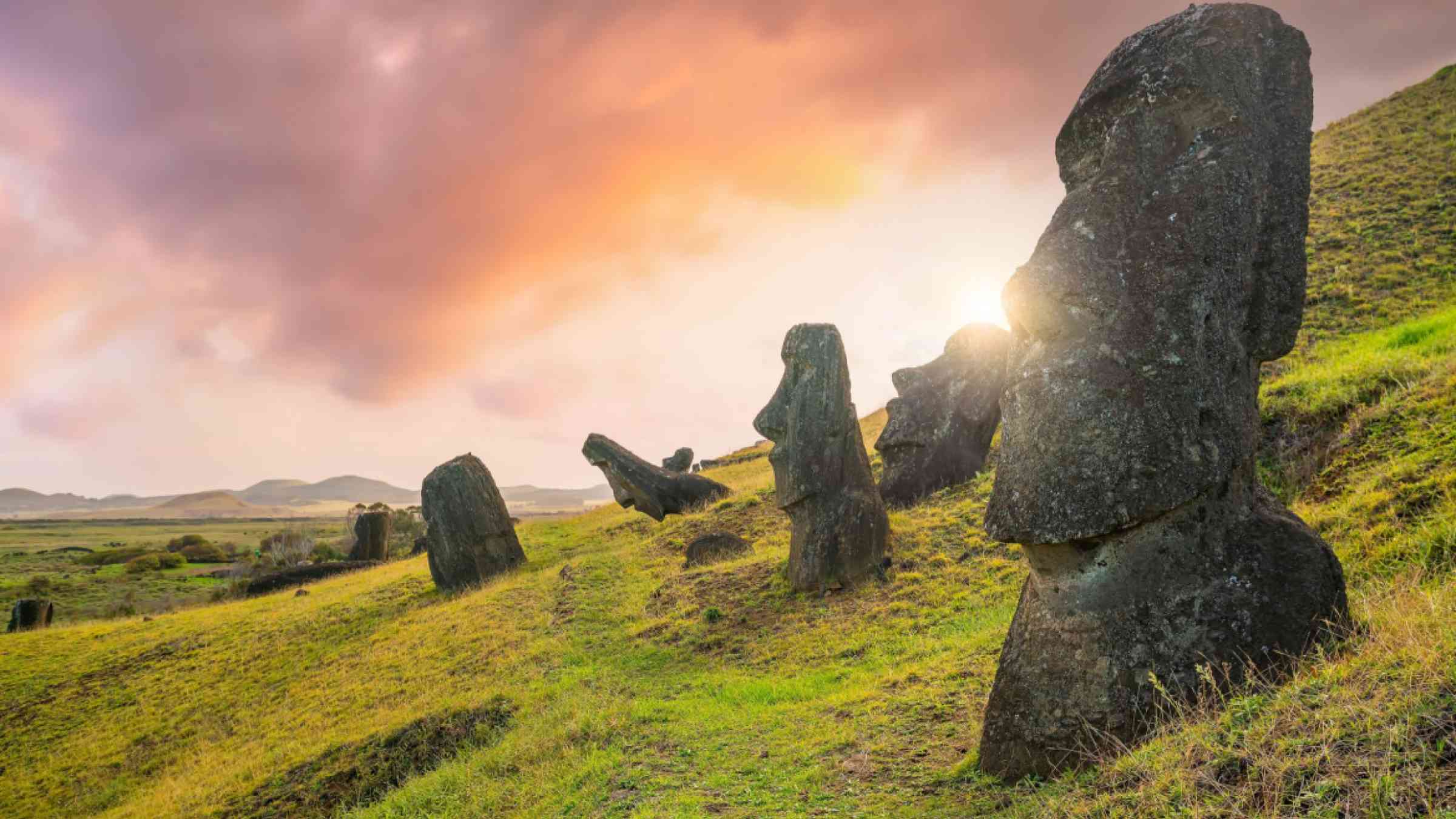After the fires on Rapa Nui (Chile) UNESCO launches an evaluation and management plan for the island's World Heritage site

UNESCO initiated in March 2023 the response actions to the fires on the island of Rapa Nui, Chile, which will include a detailed damage estimation; the development of a comprehensive preparation, coordination and management plan for the World Heritage site; the design of emergency preparedness and response protocols, as well as capacity building at the local level.
According to a post-fire report issued by the indigenous Rapa Nui community Ma'u Henua, dozens of archaeological vestiges were damaged by fire within the World Heritage site in the territory also known as Easter Island. The fires affected with particular severity the crater and quarry of the Rano a Raraku volcano, where more than 400 moai were constructed and are located, a place of significant spiritual importance and heritage value.
Following an emergency visit in October 2022, UNESCO, with the support of national, local governmental and civil society entities, secured a $97,000 fund to assess what happened and develop a diagnosis and a comprehensive disaster preparedness and management plan for the heritage site.
The actions will involve educational interventions with a wide range of stakeholders and will include the work of a local multidisciplinary team, under the supervision of UNESCO in Santiago, Chile. Its results will entail strengthening the capacities of the authorities and providing technical assistance for emergencies and risk mitigation at the World Heritage site. It will also raise awareness of the importance of protecting heritage and support the State of Chile in monitoring and coordinating recovery.
The work proposal was led by the UNESCO office in Santiago, with considerable input from a wide range of stakeholders. The planning of this project was initiated thanks to a UNESCO mission to the island, carried out between 17 and 21 October 2022 in coordination with the Ma'u Henua Community, the Provincial Presidential Delegation of Easter Island, the Municipality of Rapa Nui and the Ministry of Cultures, Arts and Heritage of Chile. During that week, the UNESCO team met with various organizations and actors of the island.
The first actions of this initiative will take place in March 2023 and will be related to the technical and multidisciplinary diagnosis of the damage caused by the fire, along with the planning and definition of methodologies for field work.
The beneficiaries and partners of these UNESCO-led activities will be the Rapa Nui community in general. The project will have the technical support of the National Center for World Heritage Sites of the Ministry of Cultures, Arts and Heritage and the UNESCO World Heritage Center.
UNESCO heritage emergency fund
This UNESCO fund finances emergency preparedness and response activities in the areas of the United Nations agency's culture-related conventions. This includes immovable cultural and natural heritage, movable cultural heritage, cultural repositories, underwater cultural heritage, intangible cultural heritage and the diversity of cultural goods, services and expressions.
Among its objectives is to strengthen the capacity of Member States to prevent, mitigate and recover from the loss of cultural heritage and diversity as a result of conflicts and natural disasters, such as what happened in Rapa Nui.